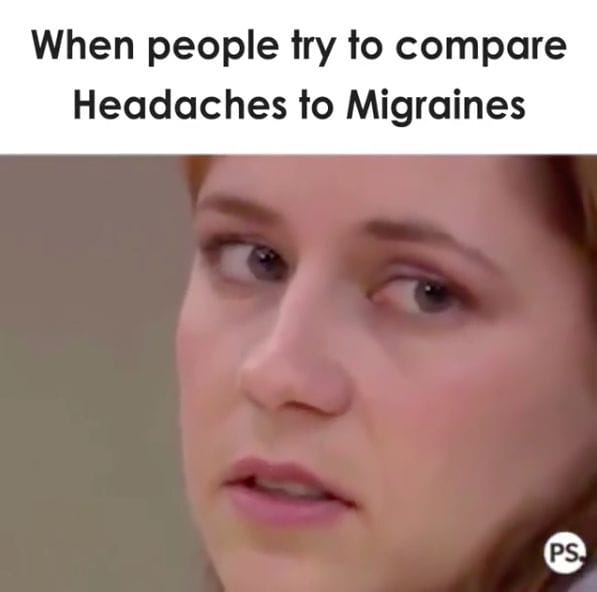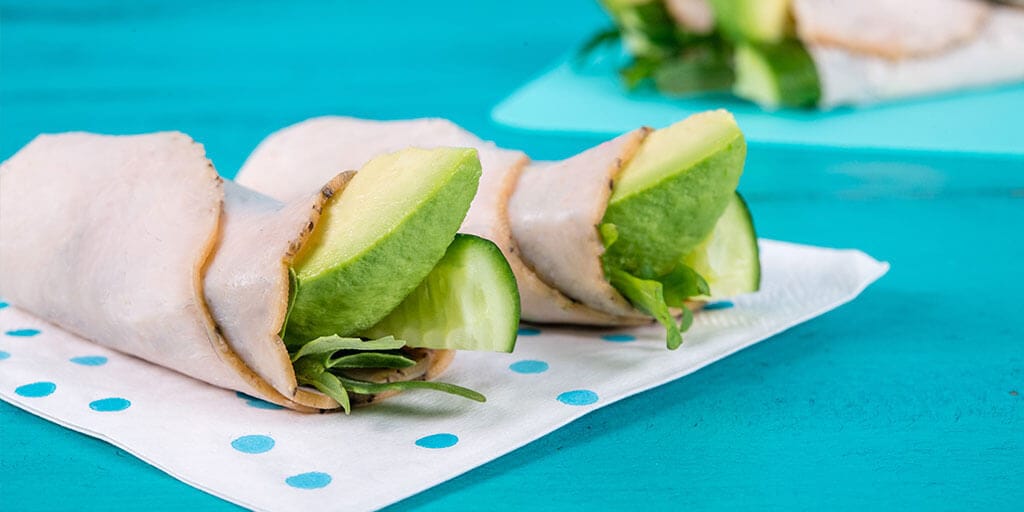- More Relief. Less Medication.
- Posts
- 🧠 The Top 5 Things We Do In The Clinic To Treat Chronic Migraine Symptoms
🧠 The Top 5 Things We Do In The Clinic To Treat Chronic Migraine Symptoms
Bridging the gap between the medical literature and what actually happens in the office...

Your hub for natural migraine management. More Relief. Less Medication.

Hey Migraine Mentees 👋
Today’s newsletter takes 5 minutes and 5 seconds to read, but if you’ve only got 60 seconds, here’s what you need to know:
Personalization is the key for finding answers…
Not all migraine attacks are created equally…
Medications can make a massive difference in managing symptoms, but they’re not the only answer…
You deserve to find the care you’ve been looking for…
This week we’re giving you the play-by-play on how we help people in the clinic… For FREE!
Now it’s up to you to take this information and run with it (under the supervision of your medical team)…
🧠 The Migraine Mentors
First time reading?! Sign up HERE.

In This Week’s Edition…
🥡 Weekly Take-Out
Meme of The Week - 💥 It’s Just a Bad Headache, Right…?
📸 Weekly TikToks
The Struggle of Chronic Migraine
Gut Inflammation Remedies for Migraine
🔈️ The Migraine Mentors Minicast - Podcast Series
Our Top Science-Backed Clinical Approaches to Treating Migraine
📜 This Week’s Top Article
The Top 5 Things We Do In The Clinic To Treat Chronic Migraine Symptoms
🍴 Migraine-Friendly Recipe of the Week
Cucumber and Turkey Rollups

🥡 WEEKLY TAKE-OUT
Meme of The Week


🥡 WEEKLY TIKTOKS
The Struggle of Chronic Migraine
@headache_whisperer #migraine #migraineawareness #migraines #migrainerelieftok #headache #headaches
Gut Inflammation Remedies for Migraine
@drerikreis #creatorsearchinsights #MigraineRelief #migraines #MigraineResearch #migraineawareness #migraine #chronicillness #vestibularmigraines #mig... See more

🗞️ MIGRAINE MINICAST
Our Top Science-Backed Clinical Approaches to Treating Migraine
🧠 This week’s solo episode with Dr. Reis breaks down exactly what we do in the clinic to treat chronic migraine symptoms—step by step.
From advanced neurological exams to brain-based therapies and laser treatments, you’ll get an inside look at how we personalize care using the principles of neuroplasticity.
💡 Dr. Reis walks through the top five tools we use every day—covering everything from movement therapy and stress assessment to vagus nerve stimulation and low-level laser therapy.
🎧️ Tune in now to learn how treating the brain (not just the symptoms) can lead to lasting migraine relief.
👇️ Click the link below to check it out! 👇️

📜 TOP ARTICLE
The Top 5 Things We Do In The Clinic To Treat Chronic Migraine Symptoms
If you’ve been to specialist after specialist without real answers—or lasting relief—it’s easy to feel like your symptoms are just something you’ll have to live with…
We get it.
It’s why we created this newsletter… And why we want to share our treatment approach with you!
At The Neural Connection, we don’t just look at your symptoms…
We look at your whole system—how your brain, body, environment, and past history all interact.
Our goal is to help you retrain the brain, calm the nervous system, and build long-term resilience through personalized care to actually help you overcome your migraine attacks and live the life you know you were meant to live.
With that said, we wanted to highlight how we go about doing so in our office and give you a sneak peek into what our patients experience in our office…
Here are the The Top 5 Things We Do In The Clinic To Treat Chronic Migraine Symptoms to help patients break the migraine cycle and reclaim their health…
🔎 1. Detailed Neurological and Orthopedic Examination
Migraine attacks aren’t just about stabbing head pain—they often involve the eyes, balance system, spine, and other neural pathways.
We perform a 90-minute, head-to-toe assessment to understand how your brain is processing movement, sensory input, and structural feedback.
We’ve found that this allows us to identify underlying dysfunctions and create a care plan built around your unique neurological patterns.
Just because something worked for someone else doesn’t mean it will work for you…
🥗 2. In-Depth Medication, Supplements, and Diet/Nutrition Review
Many people are taking multiple medications or supplements—yet still struggling with flare-ups.
…How do we know what’s working and what isn’t?
🛑 We don’t!
We believe it’s necessary to dive deep into what you’re currently taking, how it might be interacting, and whether it's actually supporting your system.
We also evaluate your diet, nutrient status, and gut health to identify hidden triggers like inflammation, blood sugar crashes, or histamine overload that can worsen migraine symptoms.
A LOT of our patients make significant gains in their symptoms by auditing their diet and making changes to their eating habits…
But it’s not the only thing that matters.
🧠 3. Discuss Life and Life-Stressors (Mental Health, Trauma, and Emotional Stressors)
Stress, anxiety, and trauma can all impact how the nervous system functions—and how it heals.
That’s why we spend time asking deeper questions about your stress load, mental health history, emotional resilience, and coping strategies.
As we’ve previously discussed in past newsletters, stress can affect the brain in various ways, but not all stressors are created equally, especially in the presence of mental health issues.
We’ve found that this inquiry helps us understand how your brain responds to pressure and allows us to tailor treatment with trauma-informed care, when needed.
🏋️♀️ 4. Personalized Therapies, Exercises, and Protocols to Re-Wire The Brain
We don’t just manage symptoms—we help you build new brain pathways.
Neurons that fire together, wire together, which is why you can learn something new until the day you get called upstairs and change your brain.
But it’s a two-way street; If you don’t use it, you may lose it…
Our therapies are created based on our examination findings and intake forms, specifically designed to help our patients “update their software” as quickly as possible.
These often include visual retraining, vestibular therapies, balance work, proprioception drills, and structural rehab to improve how your brain communicates with the rest of your body.
And when paired together with personalized brain-centric nutritional and metabolic protocols, we find that people can make changes in a very short period of time…
These neuroplasticity-based tools help recalibrate the central nervous system—and can reduce the brain’s threat responses over time.
🛠 5. Deploy Advanced Medical Devices and Tools To Promote Healing
Sometimes the brain needs more than movement and mindset—it needs technology to support its healing.
We use tools like low-level laser therapy, vagus nerve stimulation, vascular boot therapies, tilt-table exercises, and neurological modulation devices to calm the nervous system, support cellular repair, and lower inflammation.
It’s not because we want to… It’s because we feel as though we have to in order to get the results we’re looking for!
Every treatment is personalized and integrated—built around your symptoms, history, and recovery goals.
💡 Why This Matters
We believe that migraine is more than just a symptom—it’s a whole-system issue involving the brain, body, gut, and environment.
And when care is targeted, brain-based, and truly personalized, the results speak for themselves…
If you’re tired of chasing symptoms and ready to explore a more comprehensive, functional approach to migraine recovery, we’re here to help.
🧭 You can learn more about our work at The Neural Connection, where we share patient testimonials, research-backed blogs, and helpful resources for healing chronic migraine from the root.
Got more questions?
👉️ Click the button below to speak to one of us!

🍴MIGRAINE-FRIENDLY RECIPE
Cucumber and Turkey Rollups

🥣 Ingredients
Sliced Turkey (fresh, nitrate-free)
Migraine-friendly: Nitrate and nitrite preservatives, often found in processed meats, are known migraine triggers. Choosing freshly cooked, nitrate-free turkey helps avoid these potential triggers.
Histamine-friendly: Freshly cooked, unprocessed turkey is typically low in histamine. As histamine levels increase with storage, using fresh turkey is important.
Cucumber Slices
Migraine-friendly: Cucumbers have a high water content and are naturally low in common migraine-triggering compounds like tyramine.
Histamine-friendly: Cucumbers are low in histamine and often tolerated well on a low-histamine diet.
Hummus
Migraine-friendly: Hummus made from chickpeas, tahini, olive oil, lemon juice, and garlic can be a safe choice. However, everyone reacts differently, so it's best if you know you tolerate these ingredients well.
Histamine-friendly: While some people might be sensitive to individual hummus ingredients, generally, chickpeas and fresh tahini are considered low in histamine. It's important to use freshly made hummus and adjust if needed (e.g., limiting or omitting lemon juice if sensitive).
📖 Instructions
Spread a thin layer of hummus on a turkey slice.
This step ensures you get a creamy texture and added flavor, using a potential protein source that is friendly on this diet.
Place a cucumber slice on top.
Adds crunch and freshness, keeping the snack light and hydrating.
Roll it up and enjoy.
This simple preparation keeps the flavors fresh and ensures easy handling and portion control.

How did you like this week's email? |